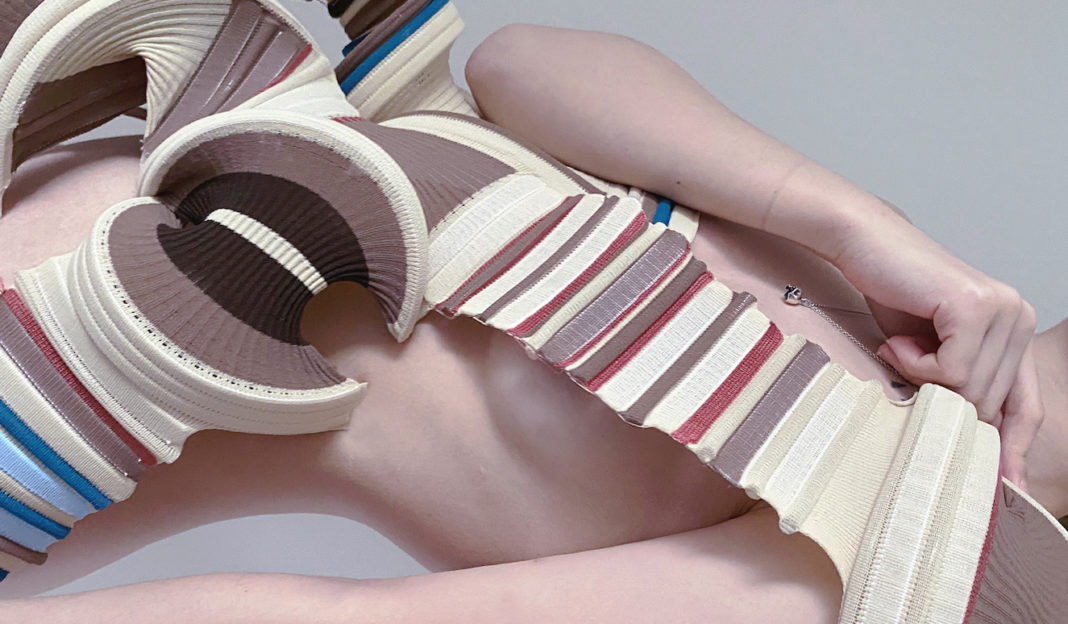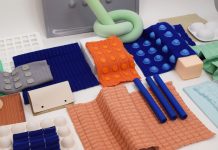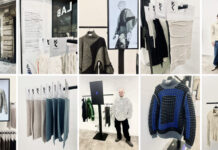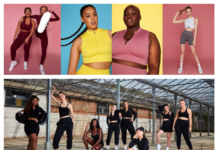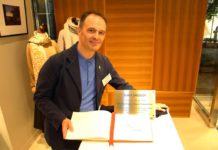The annual Royal College of Art WIP Show is a rare opportunity to gain insight into the creative processes of students embarking on their final year projects. KIC met with MA Textiles students who each have unique approaches to their knit specialism, pushing the boundaries of material capabilities and demonstrating the culture of experimentation that the course encourages.
Rongdi Ma
“How can we visualise the spaces around our body that we create through our movements?”

Rongdi’s inspiration comes from the shapes created by the human body during dance and performance. Oskar Schlemmer’s ‘Body movement regulation principle’ was of particular note to her, as well as the costumes of the Bauhaus Movement.
Fascinating objects in their own right, Rongdi’s surprisingly lightweight samples are engineered to fold down into themselves through hand manipulation. Once placed on the body they reveal multi-faceted possibilities for silhouette and function. During a thorough process of 2D and 3D experimentation, Rongdi has developed a series of knitted prototypes that flex, fold, twist, and compress in fluid yet structured forms.

The precise placement of strips of boning trapped within her knits creates the core structure around which yarns stretch, envelope and contract. Whilst developing her yarn palette, Rongdi was inspired by Oskar Schlemmer’s ‘Invisible embracing space’ concept and trialled the use of monofilament to emulate this transparency. This did not achieve the pliability required, so she introduced Lyrca.
Rongdi’s approach to pattern development is fascinating, as she drapes herself in fabric, then draws onto herself as she moves. Laying the fabric flat again, she is able to trace the drawn shapes and knit them, to create 3D sculptural forms. Her unique approach to pattern creation is communicated thoroughly within pages of images, life drawings and technical drawings.

With a soft sculpture costume potentially in the making, Rongdi plans to collaborate with performance artists to capture her knits in motion – coming full circle from her inspiration of the human form to ultimately reimagining it.
Anna Davies
“What possible advantages could the elasticity and flexibility of knit have on the functionality of design?”

Anna Davies began developing her line of enquiry during her MA dissertation. Interrogating the under appreciation knitted fabrics, her project pulls knit from traditionally expected stereotypes. Assessing the problems faced by increasingly nomadic generations who travel more and ‘settle down’ less, one area of enquiry for Anna is the creation of multifunctional textiles that could have a furniture application. Through developing fabrics that can fold and have both ridged and fluid qualities, she makes multifunctional fabrics that could be compacted to move from space to space and deconstructed for material recycling and the end of their life cycle.
Anna’s prototype fabrics were in the form of tubular 10 gauge knits with solid, linear structures inserted. She knits variations of pockets into which she inserts wooden rods and acrylic tubes post machine. Utilising Shima Seiki technology she has also trialled jacquard and intarsia structures to experiment with colour placement and variation.

Currently employing zero-waste production methods, responsible design is an important area of enquiry for Anna. She also relishes the challenge of cross-disciplinary collaborations and has worked on concepts within jewellery and footwear design to explore her knitted structures with new applications.
Yunzhi (Gina) Wang
“What was the aesthetic when you were a child, and has it changed now?”

Inspired by the nostalgia of her childhood, Yunzhi remembers younger years with her cousin and stickers they would have on their bedroom walls. The deterioration of these once vivid, colourful stickers over the years reminds her how time flies and memories fade. Approaching her project with a playful energy, Yunzhi explores an adult perspective of childhood.
Yunzhi had focussed on textiles for fashion during her BA. Choosing to push her practice within the context of a gallery space, she explored this during her first year at the RCA, and has now returned to the fashion context with a renewed sense of the importance of narrative within her textiles.
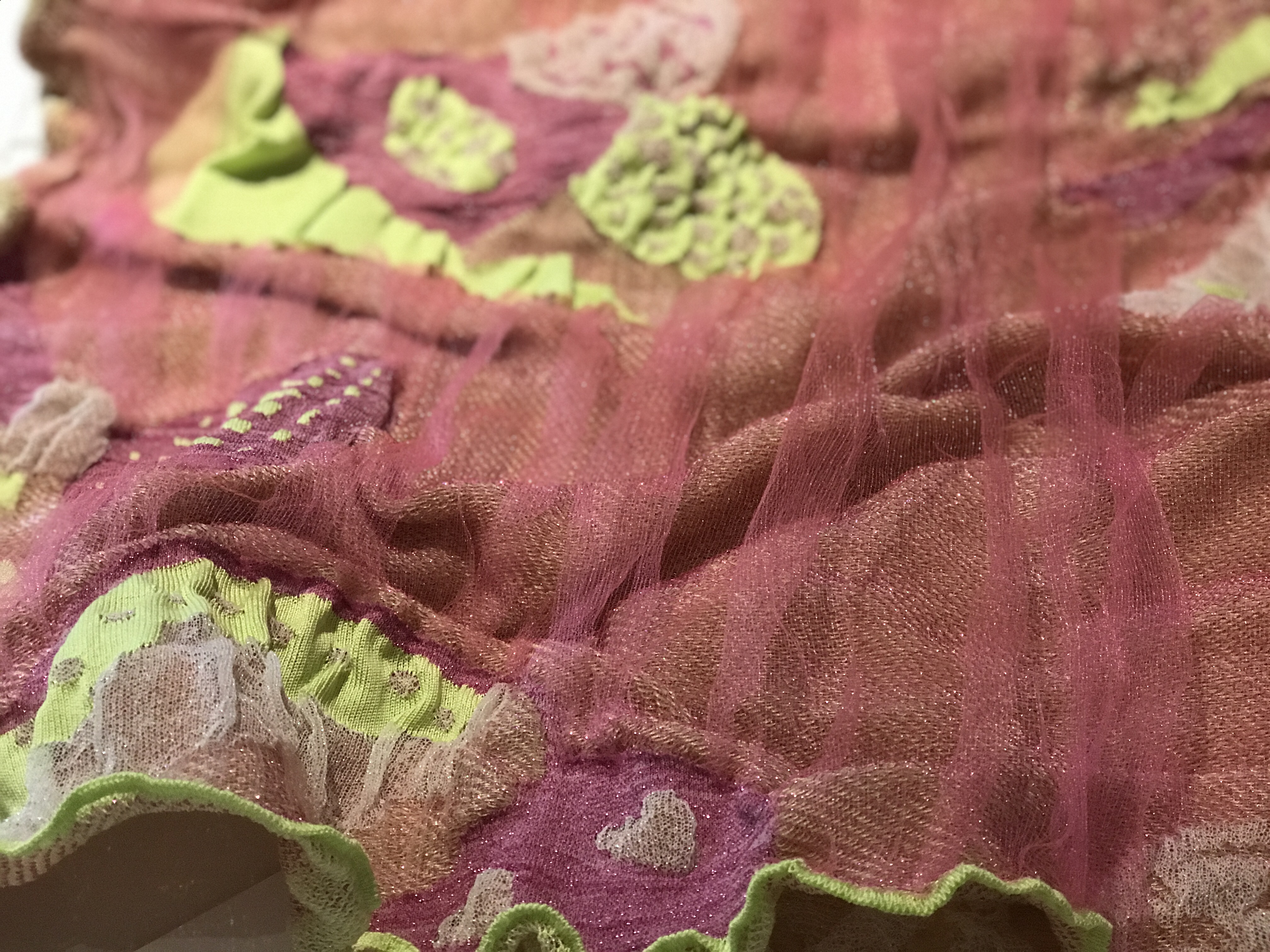
Yunzhi captures imagery, colours and textures from photographs using mixed media collaging techniques and doodles. She machine knits fabric bases upon which she applies post machine processes to embellish and texturise her fabrics further. The fabric bases are often stocking stitch, with her additional processes including crochet, macramé and applique. Yunzhi uses yarn as a drawing tool to bring the handwriting of her paperwork into her textile sampling.

Yunzhi’s graduate collection will be a culmination of her extensive craft and making capabilities with her instinct for characterful design.
Michelle Rinow
“What if knits could seemingly come alive in response to our touch through the use of smart materials?”
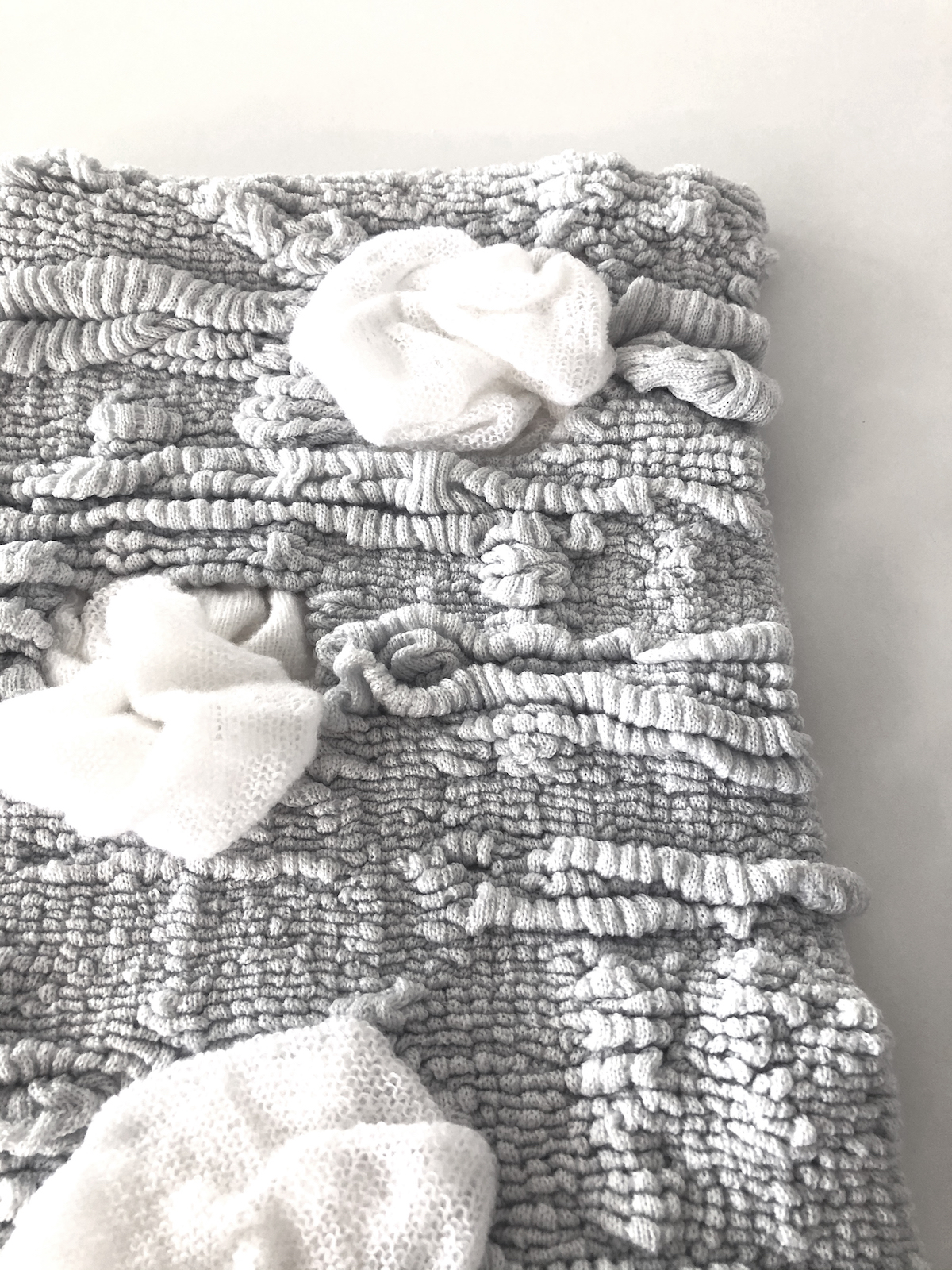
Exploring the connection between humans and technology, Michelle Rinow’s project combines knits with smart textiles. Inviting visitor interaction, her intriguing knitted fabric lay on a table, and when pressed, gradually expanded.
Soft robotics and biometric movements in nature interest Michelle. Having previously worked with bio plastics and mycelium, she explored the literal material possibilities of nature. Now Michelle’s inspiration comes in a metaphorical sense, replicating sensations in nature such as breath-like movements and the fluttering of petals. Using soft robotics to make her fabrics expand and contract – inhale and exhale- is an area of enquiry for her.
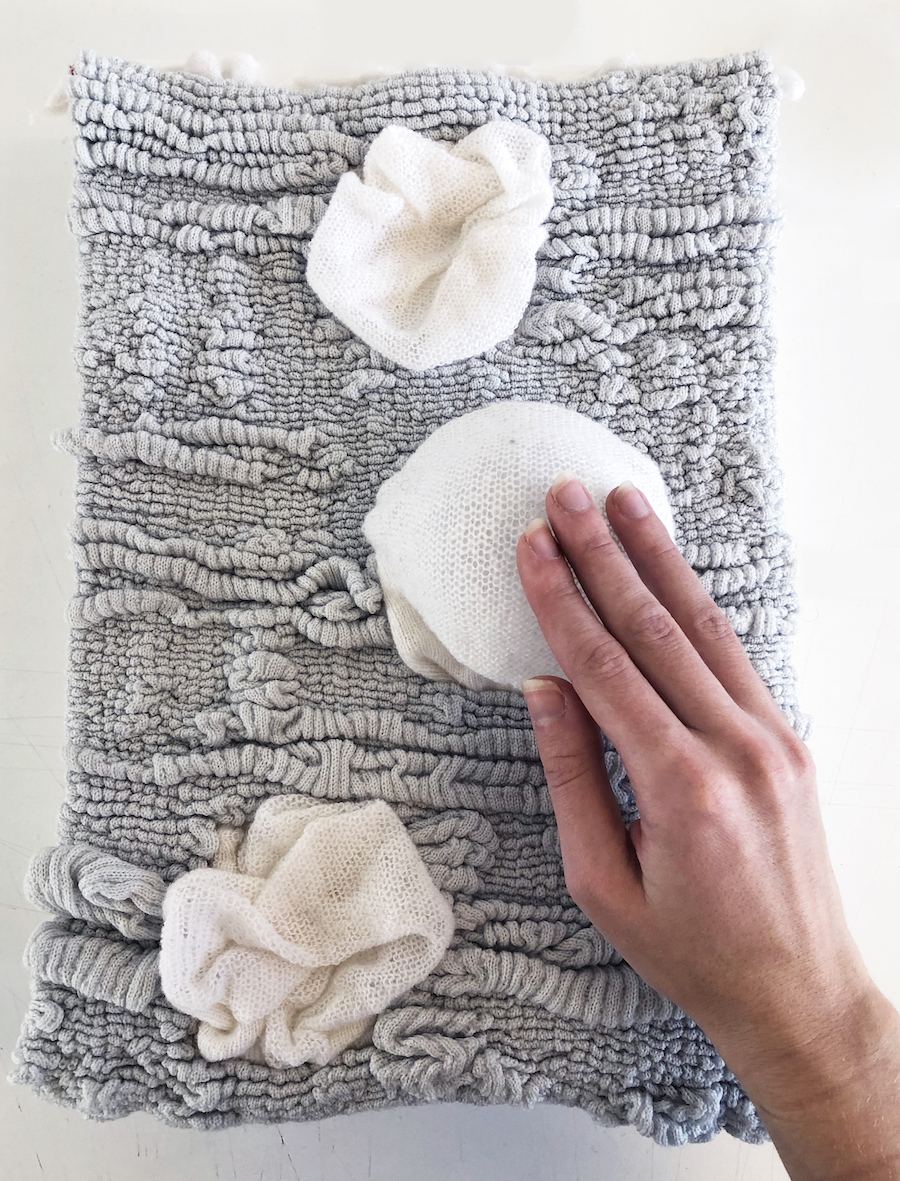
Michelle samples her fabrics on a domestic machine initially, trialling yarns and stitch structures. Pushing the capabilities of ripple stitch on Shima Seiki machines, she produces her finer gauge fabrics. Her yarn choices are both aesthetic and functional. Replicating the tiny hairs and touch receptors of animals and plants, her yarn palette contains mohair and wool. She combines this with elastic, often hidden on the back bed, as a mechanism to facilitate fabric expansion and contraction.
Michelle had predicted before the show that her work would be interpreted as relaxing, with the subdued colour palettes and soft, inviting textures. Visitor feedback however has revealed a playful response is triggered, and this is an avenue she is keen to explore in the next phase of her process.
The MA Textiles Graduate show in summer 2020 is certainly an event to look forward to, seeing the ideas of these promising new designers and their colleagues come to fruition.

Subscribe To Our Newsletter
Join our mailing list to receive the latest news and updates from our team.


